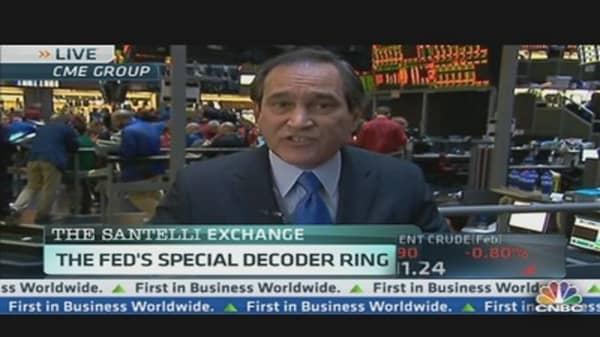The Fed has used its money-creation powers to pump $2.9 trillion into the economy, elevating risk assets while simultaneously keeping its fund rates target near zero.
At the December FOMC meeting, the central bank assured the market it wouldn't touch interest rates until unemployment fell to 6.5 percent. Friday's nonfarm payrolls report put the rate at 7.8 percent. (Read More: Some Members See QE End Before End of 2013: Fed)
Still, discussion at the meeting, as revealed in the minutes released Thursday, showed not everyone is on board. That was enough to spook a market dependent on cheap money.
Stocks edged higher Friday as the Fed fears abated, while market experts more or less scoffed at worries that QE would end anytime soon.
"These are not the type of data that would scare the Fed," broker-dealer firm Strategas said, calling the jobs numbers "consistent with the 'muddle-through' seen in the U.S. economy."
John Canally, investment strategist and economist for LPL Financial, said the payrolls report would have no effect on monetary policy. (Read More: Fed Bond Buying Will Run for a 'Long Time': Goldman's Hatzius)
"On balance, the report does not change our view of either the labor market - solid, decent, modest, but not spectacular - nor our view of the Fed's view on the labor market," he said. "We continue to expect the Fed to purchase $85 billion in Treasurys and (mortgage-backed securities) per month in 2013."
To alter its strategy, the central bank would need to see concrete proof of a strong, sustained recovery, something that has remained elusive despite improvements.
Through that prism, positive economic data sometimes has a negative market impact. Investors worry that positive signs could cause the Fed to pull back prematurely.
But the Fed's calculus won't be that simple.
"It should have been always known or assumed that there are two broad steps of what the Fed is going to be doing, which is end QE first and raise rates second," said Liz Ann Sonders, chief investment strategist at Charles Schwab. "I'm not so sure the news out of the minutes was anything terribly shocking."
Investors, then, ought to be thinking more about what's happening in Congress than at the Fed, Sonders added.
With the "fiscal cliff" issue momentary resolved but a debt ceiling battle brewing, that should be enough to keep the Fed easing and investors looking for opportunities.
"We're sort of itching to get less neutral from a sector perspective," Sonders said. "The path of least resistance is still up, but that's not withstanding the possibility of some difficulty in the near term."





